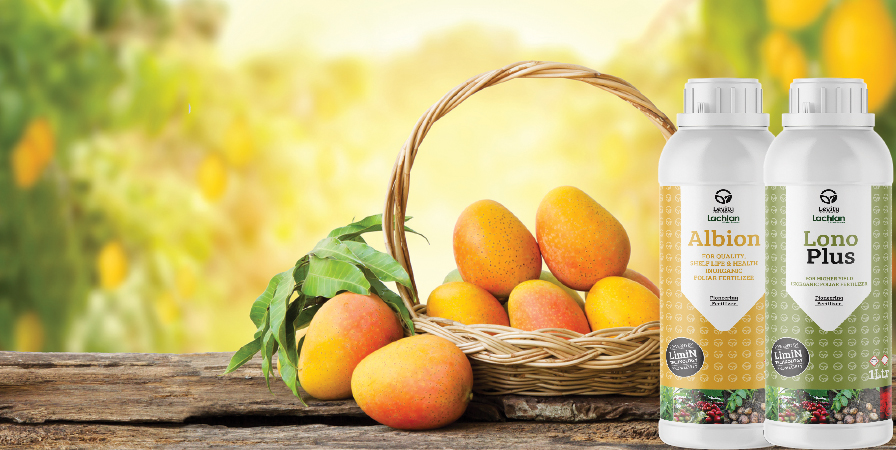LIMAR COMBI SC: Dual-Action Herbicide for Effective Weed Control in Maize
Limar Combi SC is a herbicide for the pre-emergence and early post-emergence control of annual grasses and selected broad-leaved weeds in maize.
Limar Combi SC is a herbicide for the pre-emergence and early post-emergence control of annual grasses and selected broad-leaved weeds in maize.
Duramon 30 is a slow release nitrogen fertilizer enriched with sulphur, zinc and magnesium that are necessary for photosynthesis.
Multiphos 10-25-0 + TE is a granular Compound NP fertilizer (Chemically Formulated) containing secondary and microelements for direct application to soil or in physical mixtures.

Agriculture’s reached a tipping point,” says Dr David Marks. “The truly progressive farmers are those who are thinking ahead: how can I grow crops more sustainably, without compromising yield, production, or quality?”
“Most importantly, how can we grow crops in the 21st century without exhausting our planet’s limited resources?”
To help farmers find answers to these questions, Dr Marks founded Levity Crop Science: its raison d’être is to ‘move crop nutrition on’.
It’s frustrating that while we’re getting excited about the latest technologies around use of drones and satellites and sensors and how to leverage the internet of things in agriculture, our approach to crop nutrition has rather stalled.
“Farmers are frustrated that crops don’t respond to simple trace elements and micronutrients,” he acknowledges.
“We look at the crop, decide what nutrients it needs, work out how to source those nutrients, apply them to the crop – and essentially hope
for the best.”
“There’s an all-pervading view that if we throw the right nutrients at the crop, they’ll work.”
Dr Marks says this thinking is misleading and wasteful. Nitrogen, for example, is presented to the crop in a variety of forms, be a nitrate, an amide or ammoniacal form – each is a different compound, with a different molecular structure, and each is used by the crop in a specific way.
“Failure to distinguish between amine, nitrate and ammonium means that we apply two-thirds more nitrogen than the crop can use. Not only are farmers seeing extremely poor resource-use efficiency, but we’re seeing the effects of that excess in water pollution and greenhouse gases – nitrates and nitrous oxide.”
Then there’s phosphate, use of which has quadrupled in the last 50 years as food production has increased. Yet nearly all our phosphate is dug out of the ground in huge quantities, from reserves estimated to have only a few decades left – “and when you look at something like triple superphosphate, the crop can extract just 4%.”
Tackling this ‘sheer unsustainability’, as he describes it, is the objective for all the products in the Levity portfolio. They’re ‘bioactive’ compounds, carefully designed to take advantage of the complex biochemical processes that happen within plants.
“Within every crop it’s these biochemical reactions that give us food, feed, fiber, or fuel: leaves, fruit, tubers, nuts, seeds. Agriculture is based on biochemical reactions, and crop nutrition or crop protection products interact with, or influence, these reactions to change plant behaviors.”
Most crop nutrition products applied today are passive, explains Dr Marks. To get transferred to the plant’s transport system, farmers rely on uptake through roots or leaves. But every nutrient behaves differently. “Sometimes it doesn’t matter how much product you apply,” he says, “because the plants only take in a small amount. Calcium’s an example: it only moves upward within the plant. Foliar calcium? Mostly wasted as the plant cannot store the excess applied, excreting it through the leaf surface. The plant also struggles to move it to where it’s needed – the fruit, say.”
Research and development
Levity’s research and development starts with the nutrient: understand its behavior, then track the biochemical pathways. At this point, Dr Marks’ team of scientists embarks on a search for
compounds that stimulate better uptake or improve transport within the plant – a process he likens to ‘supercharging’ the plant’s metabolic pathways.
“Our products use those existing pathways and allow the crop to help itself.”
It’s not just about improving efficiency. Dr Marks points to increasing acceptance that, just as in human health, nutrition affects plant health. Give a crop a balanced set of nutrients and it becomes less susceptible to attack from pests and diseases.
“Most nitrogen-containing fertilizers boost vegetative growth. That makes plants weak and more susceptible to disease. Then you need a fungicide program, or a plant growth regulator.”
But choose the right form of nitrogen and farmers might avoid the need for these extra products. Fewer bought-in inputs would be good for the crop, good for soils, good for the environment and good for the consumer.
“Who wants to continue the never-ending cycle of resistance? One active substance, metalaxyl,
is approved for carrot cavity spot in the UK; it’s no surprise that Albion [Levity’s calcium-based cavity spot control] has been so well received by growers.”
“Levity’s products are widely used on staples such as wheat, rice, maize and potatoes, but the same principles – better yield, higher quality, environmental responsibility – find favor with growers of avocados, blueberries, ornamentals, herbs, beans, tomatoes and other economically important crops.
Built on sound science, unlike many crop nutrition products, growers like the products as they see clear results.”